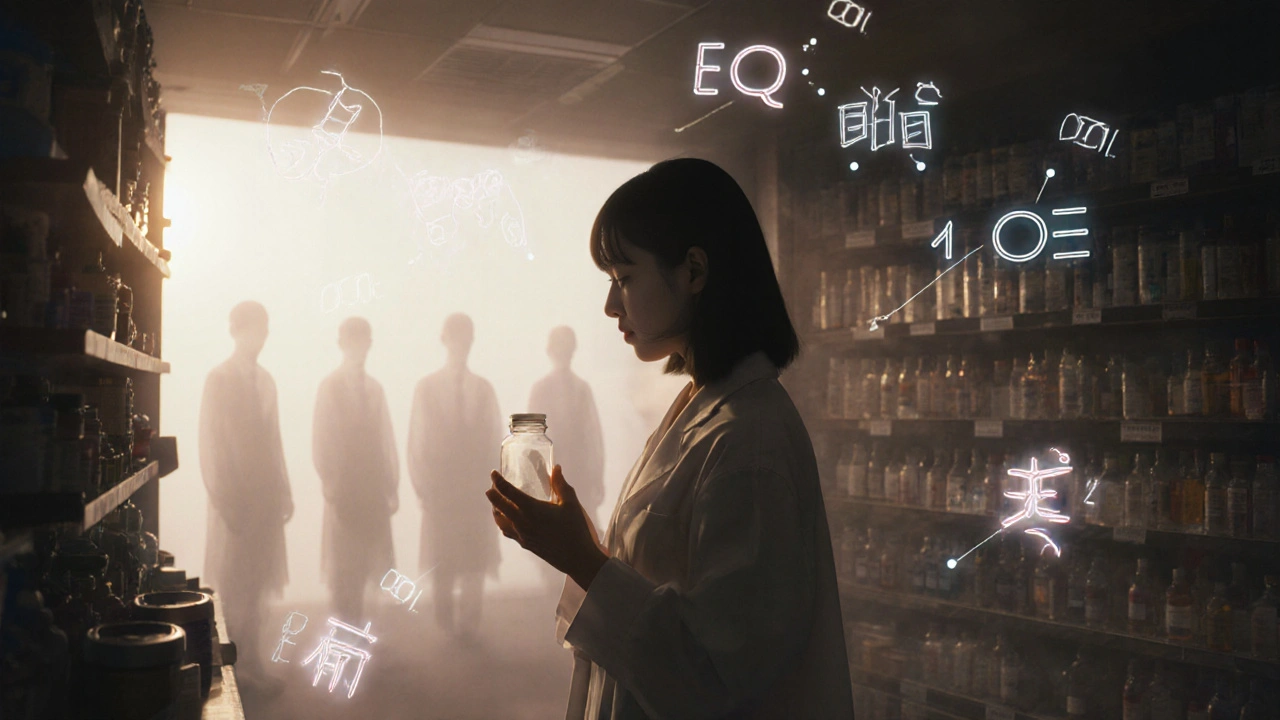Generic drugs make up nearly 90% of all prescriptions filled in the U.S., but they account for just 20% of total pharmaceutical spending. That’s not because they’re cheap to produce-it’s because the system is built to squeeze every penny out of them. The result? A supply chain that’s dangerously thin. When a generic drug sells for pennies, there’s no room for error. One factory shutdown, one delayed shipment, one inaccurate forecast-and patients go without. This isn’t just a logistics problem. It’s an economic one.
The Affordability Paradox in Generic Drug Supply Chains
Generic drug manufacturers compete on price, not quality. That sounds fair-until you realize how it breaks the system. As prices drop, margins vanish. The average EBITA margin for generic drug distributors is now 8%, down from 12.5% in 2018. To stay profitable, companies cut costs everywhere: fewer suppliers, leaner inventories, tighter production schedules. But here’s the catch: the more you cut, the more fragile the chain becomes. According to Drug Patent Watch’s 2023 analysis, generics priced below $0.10 per pill are 73% more likely to face shortages than those priced above $0.50. Why? Because low-margin drugs get assigned to single-source manufacturers. Over 80% of the world’s active pharmaceutical ingredients (APIs) come from just three countries: India, China, and the U.S. If a storm hits a plant in Hyderabad or a regulatory inspection shuts down a facility in Shanghai, there’s no backup. And with only one or two manufacturers making most essential generics, as former AmerisourceBergen COO John Smith pointed out, the entire system becomes a single point of failure.What Efficiency Really Means in Generic Distribution
Efficiency here isn’t about speed or flashy tech. It’s about doing more with less-without breaking. Top performers don’t just cut costs; they restructure how they think about inventory, forecasting, and supplier relationships. The most successful distributors use the Efficient Chain Model: high-volume, low-variability, standardized processes. They don’t try to be everything to everyone. Instead, they focus on a core set of high-turnover generics-like metformin, lisinopril, or amoxicillin-and optimize every step around them. Teva Pharmaceutical’s 2022 supply chain overhaul cut inventory carrying costs by 32% by shifting from broad, scattered distribution to focused, demand-driven networks. They rely on math, not guesswork. The Economic Order Quantity (EOQ) formula-Q = √(2KD/G)-helps them calculate the exact number of units to order to balance ordering costs and storage fees. Leading companies using this method cut stockouts by 30-45%. That’s not magic. It’s precision.Technology Is the Only Way to Survive
Manual spreadsheets and legacy systems can’t handle today’s volatility. The top 50 generic distributors have adopted AI-driven forecasting tools at a 42% rate-up from 18% in 2019. These tools don’t just look at past sales. They factor in hospital procurement trends, Medicare prescription changes, even weather patterns that affect patient visits. McKesson’s new ‘DemandSignal’ platform, launched in Q2 2023, reduced forecast errors by 37% in pilot programs. That’s huge. A 10% improvement in forecast accuracy can mean the difference between a 98.5% service level and a 92% one-and that gap can cost millions in lost sales and reputational damage. IoT sensors track temperature and humidity during transport. Forty-five percent of generics require climate-controlled shipping. One batch of insulin or epinephrine that overheats isn’t just a loss-it’s a safety risk. Cloud-based ERP systems give distributors real-time visibility across warehouses, trucks, and manufacturing lines. Cardinal Health’s $150 million investment in predictive analytics helped them gain 3.2% market share in 2022 alone.
The Hidden Cost of Just-in-Time
Just-in-time (JIT) inventory sounds perfect: no wasted space, no excess stock. But in generics, it’s a gamble. JIT reduces storage costs by 22-35%, but increases stockout risk by 15-20% during disruptions. That’s why 68% of distributors surveyed by Supply Chain Dive in January 2023 reported severe shortages after eliminating all safety stock. The smarter approach? Strategic buffer. Top performers keep a 15% minimum inventory buffer for critical generics-drugs like epinephrine auto-injectors, seizure medications, or dialysis solutions. It’s not about hoarding. It’s about risk management. As one Cardinal Health operations manager put it on LinkedIn: “We don’t carry extra stock because we’re inefficient. We carry it because we’re responsible.”Who’s Winning and Who’s Falling Behind
The gap between leaders and laggards is widening. Top-quartile distributors now hit 9.2% EBITA margins. Bottom-quartile players struggle at 6.8%. That 2.4-point difference isn’t just profit-it’s survival capital. It’s what lets one company invest in AI, while another keeps using fax machines to reorder. The big three-McKesson, AmerisourceBergen, and Cardinal Health-control 85% of U.S. generic distribution. And they’re pulling away. Their scale lets them absorb the $2.5-4 million cost of blockchain traceability systems or the 12-18 months needed to integrate new platforms. Smaller distributors? Many can’t afford the upfront cost. Their adoption rate for AI tools is just 15%. The FDA’s Drug Supply Chain Security Act (DSCSA), requiring full electronic traceability by 2023, added 5-8% to operational costs. The EU’s Falsified Medicines Directive did the same. Compliance isn’t optional anymore. It’s a barrier to entry. The result? Consolidation. Smaller players are being bought out-or pushed out.What Gets Measured, Gets Managed
You can’t improve what you don’t track. Top performers monitor three key metrics religiously:- Overall Equipment Effectiveness (OEE): Calculated as Availability × Performance × Quality. Leaders hit above 85%. The industry average? 68-72%. A 10-point gap here means more waste, more delays, more lost product.
- Perfect Order Percentage: The percentage of orders that are on time, complete, undamaged, and correctly documented. Multiply each percentage together. A 95% perfect order rate means you’re getting it right almost every time. Anything below 90% is a red flag.
- Customer Order Cycle Time: How long it takes from order placement to delivery. Top distributors cut this to under 48 hours. Slower ones take 72+ hours. In emergencies, that’s the difference between life and death.



satya pradeep
November 18, 2025 AT 02:39Yo this is wild but also so real. I work in pharma logistics in Hyderabad and seen factories shut down for 3 weeks because some FDA inspector showed up with a checklist longer than my ex’s text history. No backup? No mercy. We’re all just one monsoon away from a nationwide insulin crisis.
Prem Hungry
November 18, 2025 AT 08:32Respectfully, while the systemic issues are valid, we must recognize that cost-efficiency in generics is not a flaw-it’s a societal necessity. Millions depend on these drugs. The real failure lies in policy, not practice. We need public-private partnerships to fund buffer stocks, not just profit-driven models.
Leslie Douglas-Churchwell
November 18, 2025 AT 21:39Let’s be real-this isn’t about supply chains. It’s about the Great Pharma Conspiracy. The FDA, Big Pharma, and the three distributors? All in bed together. Why do you think they pushed DSCSA? To bury the small players who knew too much. And those IoT sensors? They’re not tracking temperature-they’re tracking your prescription habits for data mining. 🤫💊👁️
shubham seth
November 20, 2025 AT 13:23This whole system is a house of cards built on methamphetamine-grade greed. You cut margins to the bone, then act shocked when the whole damn thing collapses? Newsflash: you didn’t optimize-you weaponized scarcity. And now we’re all paying in blood. 8% EBITA? That’s not efficiency, that’s a death sentence wrapped in a balance sheet.
Kathryn Ware
November 21, 2025 AT 21:01Love how you highlighted OEE and perfect order rates-those are the unsung heroes of healthcare logistics. I’ve seen teams go from 65% to 92% perfect order rates just by fixing one broken workflow: stopping the habit of ‘emailing PDFs’ instead of using EDI. It’s not sexy, but it saves lives. Also, yes, AI forecasting is a game-changer-my cousin works at McKesson and says their system now predicts flu season spikes better than the CDC. 🙌📊
kora ortiz
November 22, 2025 AT 19:31Jeremy Hernandez
November 24, 2025 AT 18:54Bro this post is just a corporate brochure with fancy graphs. Everyone knows the real issue is that the FDA approves generics like it’s a speedrun. I’ve seen pills made in a garage in Mumbai labeled ‘USP’ and shipped to Ohio. The ‘efficiency’ here is just a cover for regulatory capture. And don’t even get me started on the blockchain nonsense-just give us more domestic production. 🤡
Tarryne Rolle
November 26, 2025 AT 02:09Efficiency? What a hollow word. We’ve reduced human life to a line item on a spreadsheet. The real tragedy isn’t the shortage-it’s that we’ve stopped asking why we let it happen. We don’t need more AI. We need to ask: who benefits when a child goes without seizure medication? The answer isn’t in EOQ formulas. It’s in our moral bankruptcy.
Kyle Swatt
November 27, 2025 AT 17:29They say efficiency is doing more with less-but what if less isn’t enough? We’re not optimizing a machine here, we’re tending to human vulnerability. That 15% buffer? That’s not inventory. That’s dignity. That’s the difference between a grandma getting her blood pressure med and her family scrambling at 3am. The real tech isn’t in the cloud-it’s in choosing to care. And if we’re not choosing that, then yeah-we’re already dead.